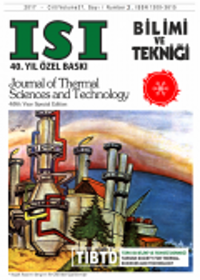INVESTIGATION OF AN SI-CAI ENGINE FUELED WITH METHANE-HYDROGEN MIXTURES FOR DIFFERENT EXHAUST VALVE LIFTS
Bilge ALBAYRAK ÇEPER* and Emin BORLU*
* Erciyes University Faculty of Engineering Mechanical Engineering Dept 38039 Melikgazi, Kayseri, balbayrak@erciyes.edu.tr, borluemin@gmail.com
Abstract: In this study, a spark-assisted controlled auto-ignition (SI-CAI) engine with different Methane-Hydrogen blends was numerically and experimentally investigated under different excess air ratio and valve lift value conditions. Experimental results were used to validate the numerical study. GT-Power simulation tool was used for the numerical studies. The valve lifts were created ranging from 3.0 to 5.0 mm with 0.5 increments. The excess air ratio values were considered as 1.0, 1.1, 1.2, 1.3 and 1.4. Besides, Methane-Hydrogen blends were constituted as 100% Methane (100M), 90% Methane-10% Hydrogen (90M10H), 80% Methane-20% Hydrogen (80M20H) and 70% Methane-30% Hydrogen (70M30H) by volume. Results revealed that the peak pressure values increase when the valve lift increases. The pressure and temperature values tend to reduce with the increasing of values. Increasing the volume fraction of Hydrogen in Methane–Hydrogen blend contributes to pressure development earlier. As a conclusion increasing of the volume fraction of Hydrogen in the Methane-Hydrogen blend causes a reduction in the indicated thermal efficiency and mean effective pressure, and a lower specific fuel consumption. Keywords: Methane-Hydrogen blends, GT-Power, valve lift, excess air ratio, cylinder pressure.
